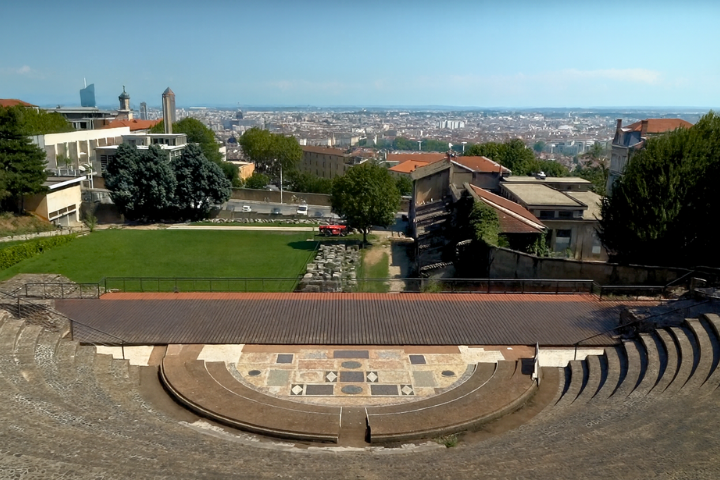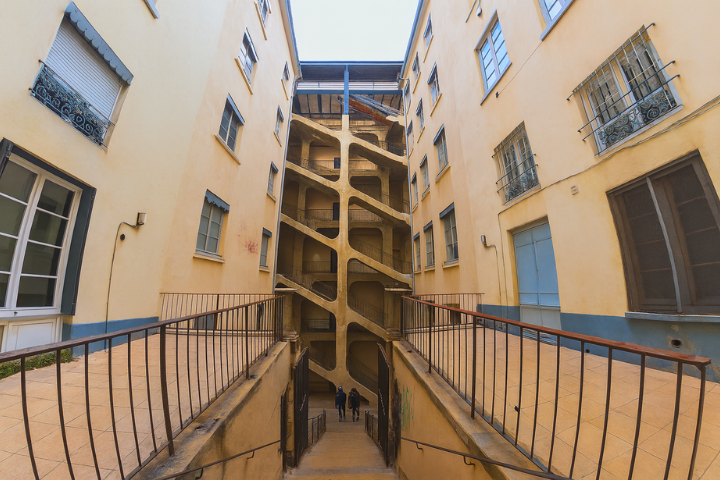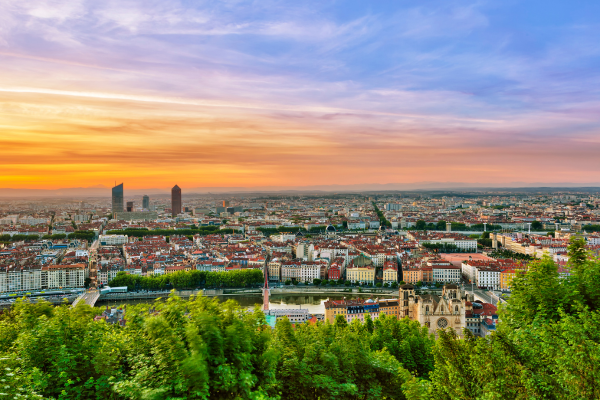If you’ve ever dreamt of stepping through time – of walking streets where Roman emperors once marched, Renaissance merchants wove silk dreams, and secret World War II resistance fighters vanished into stone walls – then Lyon’s UNESCO Old Town is your gateway.
You’ll never expect the city itself telling you stories at every turn. Let me take you through this treasure trove of history, architecture, and culture – so you’ll know exactly what to see first in Lyon’s Old Town, and how to make the most of your visit.
Why Is Lyon’s Old Town So Special?

Lyon isn’t just one historic center – it’s many cities layered over each other. Unlike other European towns that rebuild over ruins, Lyon preserved each of its historical layers by expanding outward. That’s what earned it a UNESCO World Heritage title in 1998.
It means that in just one day, you can stand inside a Roman theatre, walk through medieval alleys, and dine in Renaissance courtyards – all without leaving the city center. It’s a living, breathing history book.
Which Parts of Lyon Are in the UNESCO Heritage Site?
The site covers about 500 hectares and includes four incredibly distinct districts, each with its own personality:
What Can You See in Vieux Lyon, the Renaissance Heart of the City?
This is where most travelers begin – and for good reason. Vieux Lyon is Europe’s largest Renaissance neighborhood, divided into three enchanting quarters:
- Saint-Jean: The tourist-friendly core, with the gothic-meets-Romanesque Cathédrale Saint-Jean and an astronomical clock older than your great-great-great-grandfather.
- Saint-Paul: Think hidden courtyards, artisan workshops, and low-lit jazz bars tucked into history.
- Saint-Georges: More local, more residential, but still dripping with character.
Backstory: The silk and banking industries exploded here in the 15th and 16th centuries, financing the elegant architecture that still stands today.
Why Should You Visit Fourvière Hill First?

Known as “the hill that prays,” this is where it all began – founded as Lugdunum by the Romans in 43 BCE.
What you’ll find:
- The towering Basilica of Notre-Dame de Fourvière with views across the entire city
- The Roman Theatres, which still host music and theatre performances
- A peaceful atmosphere where spirituality meets history
It’s also the heart of Lyon’s Festival of Lights each December, honoring the Virgin Mary for saving the city from the plague.
What Makes Croix-Rousse Important to Lyon’s History?

This is Lyon’s working-class soul. In the 19th century, it was the epicenter of the silk-weaving industry.
The tall buildings here were designed specifically to house Jacquard looms – with high ceilings and broad windows – and the streets echo with the memory of the Canuts, silk workers who led France’s first labor revolt in 1831.
What Can You Explore in Lyon’s Presqu’île District?

Meaning “almost an island,” the Presqu’île is the vibrant peninsula between the Rhône and Saône rivers. Grand boulevards, public squares like Place Bellecour and Place des Terreaux, and classic French architecture set the scene.
This is where you’ll shop, dine, drink espresso in open-air cafés – and feel Lyon’s pulse in real time.
What Should You See First in Lyon’s Old Town?
Start with Fourvière Hill for the best panoramic views and historical grounding. Then walk downhill into Vieux Lyon to explore traboules, the Cathedral, and Renaissance alleys.
If it’s your first time, start with Fourvière Hill. It offers a panoramic perspective of the city – literally and figuratively. You’ll understand Lyon’s layout, its history, and its sacred roots in one beautiful view.
From there, wind your way down into Vieux Lyon, letting gravity guide your steps through time-worn alleys and golden-stone traboules.
Here’s What You Absolutely Shouldn’t Miss
Basilica of Notre-Dame de Fourvière

Perched high above the city on Fourvière Hill, this striking basilica was built between 1872 and 1896. Its architecture is a bold fusion of Byzantine and Romanesque styles, creating a look so unique that locals fondly refer to it as “the upside-down elephant.” Beyond its visual drama, the basilica stands as a powerful tribute to the Virgin Mary, who is credited with protecting Lyon during the Franco-Prussian War. Inside, the mosaics glitter, the atmosphere hums with reverence, and the panoramic view from the esplanade is unbeatable.
Roman Theatres of Fourvière

Step into the oldest theatre in Gaul, dating back to 15 BCE. With a capacity of 10,000 spectators, these ancient Roman theatres were once a centerpiece of public life—and remarkably, they still are. Today, their timeworn stone seats welcome audiences each summer during the Nuits de Fourvière Festival, a celebration of music, theatre, and performance that brings ancient history to life under the stars.
Cathédrale Saint-Jean-Baptiste

In the heart of Vieux Lyon stands this magnificent cathedral, whose construction began in 1180 and was completed nearly three centuries later, in 1476. It beautifully blends Gothic and Romanesque styles, and its crown jewel is a mesmerizing astronomical clock that stands 9 meters tall. Watch closely—it performs four times a day with mechanical scenes that have delighted generations.
Traboules (Hidden Passageways)

More than just curious Instagram backdrops, Lyon’s traboules are steeped in purpose and mystery. These hidden passageways were once used by silk workers to discreetly move delicate fabric without exposing it to rain. During World War II, they became secret routes for Resistance fighters to escape and elude German forces. Many of these traboules are still open to the public between 7 a.m. and 7 p.m.—just look for a lion plaque on the door, which signals that visitors are welcome to explore. Step through, and you’ll feel like a time traveler slipping behind the scenes of history.
How Many Days Do You Need in Lyon’s UNESCO Old Town?
Plan for at least 2–3 days to truly immerse yourself in Lyon’s layers of history and culture.
You could “see” it in a day — but to truly feel it? Give yourself 2–3 days.
You’ll want time to explore slowly, linger in traboules, sip wine at a sidewalk café, and maybe even catch a concert in an ancient Roman theatre.
What’s a Good 2-Day Itinerary for Lyon’s Old Town?
Day 1: Fourvière & Vieux Lyon
- Morning: Take the funicular up to Fourvière for basilica and theatre views
- Afternoon: Walk down into Vieux Lyon and explore the traboules
- Evening: Dine in a traditional bouchon and stroll along the Saône River
Day 2: Croix-Rousse & Presqu’île
- Morning: Visit the Maison des Canuts and see the Mur des Canuts mural
- Afternoon: Walk down to Place des Terreaux and Place Bellecour
- Evening: Enjoy Lyon’s cuisine and nightlife — or catch a river cruise
When Is the Best Time to Visit Lyon’s Old Town?
Visit in spring (April–June) or fall (September–October) for the best weather and fewer crowds.
- Mild temperatures
- Beautiful light
- Fewer crowds than summer
- Autumn brings the bonus of glowing foliage
How Do You Get From Lyon Airport to the City Center?
The Rhônexpress tram is the fastest way from the airport to Lyon’s city center.
- Direct from Lyon-Saint Exupéry Airport (LYS) to Lyon Part-Dieu station
- Takes just 30 minutes
- Taxis and private transfers are available but pricier
Quick FAQs: What Else Do Travelers Ask?
Is Lyon’s Old Town safe?
Yes! It’s tourist-friendly and walkable. Just be mindful of pickpockets in crowded areas.
Do I need to speak French?
Not at all. Most locals in the tourism and hospitality industries speak English. Still, a bonjour goes a long way!
Can I use public transport easily in the Old Town?
Absolutely. TCL tickets and the Lyon City Card cover metro, bus, and funiculars.
Are all traboules open to the public?
Not all. But many are — especially during the day. Remember, they pass through residential buildings, so be quiet and respectful.
Can you walk everywhere in Lyon’s Old Town?
Yes. Most of Old Town is pedestrian-friendly, and the streets are best enjoyed on foot.
Do you need tickets for Fourvière Basilica or Roman Theatres?
The Basilica is free to enter. The Roman Theatres have free areas and paid sections, especially during events.
What is a traboule in Lyon?
A traboule is a hidden passageway that weaves through buildings and courtyards, originally used by silk workers and resistance fighters.
Is Lyon’s Old Town worth visiting?
Absolutely. It’s one of Europe’s best-preserved historic districts and a must-see for lovers of architecture, history, and culture.
How old is Lyon’s Old Town?
Lyon was founded in 43 BCE by the Romans. The Old Town includes layers from Roman, medieval, and Renaissance periods.
Is Lyon older than Paris?
Yes. Lyon (Lugdunum) was founded by the Romans before Paris (Lutetia) gained prominence.
Final Thoughts: Don’t Rush It
Lyon isn’t a city to rush through. Its Old Town doesn’t call attention to itself in an obvious way — it invites you in to indulge in its old-world charm, while modern life runs through its veins. Through creaking shutters, rustling silk, and crumbling stones, it tells you its secrets — but only if you are willing to slow down and listen.
So if you’re wondering what to see first in Lyon’s UNESCO Old Town… start with a sense of curiosity. The rest will unfold beautifully. And if you ever need help exploring, we have a list of amazing self-guided walking tours in Lyon’s Old Town that you can do at your own pace — click here to discover them.



Comment (0)